How It Works
- Tell us details of your holiday plan.
- After you submit the form, one of our travel experts will get back to you with customised holiday package based on your requirement, within 24 hours.
- Grab the deal and start packing your bags for an indelible holiday with Tour My India.
Call Us for details

+91-9212777225
Request a quote.
North India
- Himachal Pradesh
- Uttarakhand
- Uttarpradesh
South India
- Andhra Pradesh
- Maharashtra
Central India
- Madhya Pradesh
- Chhattisgarh
Union Territories
- Andaman and Nicobar Islands
- Jammu Kashmir
- Dadra and Nagar Haveli
- Daman and Diu
Popular India Tourism Destinations by Interest

- Hill Station
- Yoga and Ayurveda
Adventure Tourism
- Motor Biking
- Peak Climbing
- Mountain Biking
- River Rafting
- Horse Safari
- Camel Safari
- Jeep Safari
Pilgrimage Tourism
- Christianity
Packages by State
- Jammu & Kashmir
Holidays by Interest
- Heritage Tours
- Ayurveda Tours
- Special Interest
Popular Tour Packages
Golden triangle tour.
- Classical India Tour
- Golden Triangle with Tiger Tour
- Sikkim Darjeeling Tour
- Frozen River Trek
Luxury Train Tour
- Palace on Wheels
- Heritage on Wheels
- Maharaja Express
- Royal Rajasthan on Wheels
- Buddhist Circuit Train
Special Packages
- Indian Wildlife Tour
- Temple Trails Tour India
- Buddhist Circuit Tours
- Himalayan Wonder
Fixed Departure Tour
- Chadar Trek
- Chopta - Chandrashila Trek
- Snow Leopard
- Dzongri Goecha La Trek
- Agra Hotels
- Jaipur Hotels
- Udaipur Hotels
- Manali Hotels
- Ladakh Hotels
Wildlife Resorts
- Ranthambore National Park
- Bandhavgarh National Park
- Corbett National Park
- Kanha National Park
- Pench National Park
- Tadoba National Park
Beach Resorts
- The Park Calangute
- Neelam the Grand
- Hotel Calangute Towers
- Alor Holiday Resort
- Lazy Lagoon Sarovar Portico Suites
Luxury Hotels
- Aman-i-Khas, Ranthambore
- Hyatt, Bangalore
- Hyatt Regency, Delhi
- Leela Palace, Udaipur
- ITC Grand Chola, Chennai
Top Weekend Breaks & Short Getaways Near Your City
- Weekend Getaways Delhi
- Weekend Getaways Mumbai
- Weekend Getaways Chennai
- Weekend Getaways Bangalore
- Weekend Getaways Nagpur
- Weekend Getaways Hyderabad
- Weekend Getaways Cochin
- Weekend Getaways Chandigarh
- Weekend Getaways Ahmedabad
- Weekend Getaways Pune
- Weekend Getaways Jaipur
- Flight Booking
- International NEW
International

States › Uttar Pradesh › Agra › Top Tourist Attractions › Taj Mahal
Taj Mahal Uttar Pradesh
Taj Mahal is the epitome of grandeur and splendour, you cannot fathom the beauty of this white marbled monument unless you stand in front of it. As you approach Taj Mahal, it gradually becomes known to you that this is no ordinary monument, but a vision come to life! Moved by its beauty and the deep affection of Shah Jahan for Mumtaz, the Nobel Laureate Rabindranath Tagore called it "a teardrop on the face of eternity". A UNESCO World Heritage Site, it is located on the bank of the Yamuna River and is counted among the most popular heritage monuments in India.
Built between 1631 and 1648 AD, the Taj Mahal stands as the finest example of Indo-Islamic architecture, and is one of the seven wonders of the world. The timeless beauty of the Taj is a reflection of the profound pain and longing which Shah Jahan was overcome by after the death of Mumtaz Mahal. Today, visitors celebrate, reflect and admire the splendour of the Taj. Inside, both Shah Jahan and Mumtaz lie buried in their graves, divided in life, but united in death.
There is nothing ordinary about the Taj. From its minarets which are always bent curiously outwards to its inlay work, calligraphy, gateways, panels and arches, every nook and corner is a manifestation of divine grace that its builder seems to have been blessed with. Every intricate detail that catches your eye is worthy of being described in thousands way for its exquisite beauty. Unsurprisingly, Taj Mahal always occupies the first place in the heritage tourism attractions in Uttar Pradesh.
Architecture
The Taj Mahal is the finest example of Indo-Persian architecture. It incorporates Persian, Indian and Islamic architectural styles. The main gateway of the Taj Mahal, which is the most photographed section of the monument, consists of a door carved from solid silver. It is believed that this door was built to prevent the tomb which is located inside from being visible from anywhere. The tomb, therefore, is only visible when you have arrived at the gateway itself. Look up though and you will find the ceiling decorated with verses from the Holy Quran in wonderful calligraphy.
The tomb itself is built in a rectangular shape and lies at the northern end of the Taj Mahal. While the ceiling is decorated with floral patterns, the floors and other areas of the room are adorned with floral designs. Here, it is interesting to know that the tombs visible to the public and tourists are not the real tombs of Shah Jahan and Mumtaz. The real ones are protected in a crypt.
One feature of the Taj Mahal which makes its presence everywhere are the lily flowers. This suggests the love of the Mughals for gardens. Indeed, some of the best gardens in India were built by the Mughals. The central hall is surrounded by eight rooms which are connected by a common corridor.
No description of the architecture of the Taj Mahal is complete without mentioning its dome. It stands like a crown on a king and plays a big role in lending this monument a feeling of eternity. Bulbous shaped, the outer doom stands at a height of almost 44.4m, while the inner dome stands at a height of almost 24.3m. It is popularly believed that this dome was built by Ismail Afandi from Turkey, a renowned palace dome designer in Turkey. Here too, the combination of Hindu and Islamic styles of architectures is visible in the form of “chhatris” (an umbrella like structure), which is a feature mostly found in temples.
Interesting Facts about Taj Mahal
- The construction of the Taj Mahal took around 22,000 painters, stonecutters, embroidery artists and labourers.
- Around 1,000 elephants were used to transport the materials to the construction site.
- Shah Jahan wanted to build a black Taj Mahal which would stand across from the original one. However, before he could do so, he was deposed by his own son Aurangzeb.
- The minarets are leaning away from the monument in order to prevent any damage to it in the event of a collapse.
- It took 17 years to complete the building of the Taj Mahal.

- The Taj Mahal appears to change colors throughout the day. In the morning, it is milky white, in the afternoon, it looks like its tinged with crimson while at night, it sparkles under the moonlight.
- Although most of the Taj Mahal is ornately decorated, the only part which is not is the tomb.
- Henry Saint Clair Fredericks, an American Grammy Award Winning Blues musician, was so enamored of the Taj Mahal that he named himself after it.
- The Taj Mahal seems to get smaller as you move towards it, and larger as you move away from it.
- During times of war, the Taj Mahal is hidden with a scaffolding so as to prevent it from any attack. This was done during World War 2, the 1971 India-Pakistan War and in the 9/11 attack.
There are different entry fees for domestic and international tourists. Foreign tourists have to pay 1100 INR + 200 INR. There is an additional fee for visiting the mausoleum, which is optional. Citizens of SAARC and BIMSTEC countries have to pay 540 INR + 200 INR. There is a separate fee for those wanting to visit the memorial. Domestic tourists have to pay 50 INR + 200 INR (for those wanting to visit the mausoleum).
- Best Time to Visit
Taj Mahal, one of the top heritage attractions of India, can be visited throughout the year. During summer, it can get quite hot. If you are brave enough to face the heat, then you can visit it without any problem. However, the cool and pleasant weather during winters creates the perfect conditions for visiting it. Taj Mahal opens 30 minutes before sunrise and closes 30 minutes before sunset. It is closed for general viewing to all visitors on Fridays.
Nearby Tourist Attractions
There are several famous monuments located in close proximity to the Taj Mahal, one of the UNESCO Heritage Sites in India. Some of these are:
- Agra Fort (2.9 km): A UNESCO World Heritage Site, it evokes admiration from onlookers for its colossal size and magnificence.
- Fatehpur Sikri (41.4 km): Like the Taj Mahal and Agra Fort, Fatehpur Sikri is a UNESCO World Heritage Site.
- Itmad-ud-Daulah Tomb (6.7 km): It is the first tomb in India built out of pure white marble.
- Shri Mankameshwar Temple (4.2 km): Mankameshwar Temple one of the four ancient Shiva temples standing on each corner of the Agra city.
- Akbar's Tomb (14.8 km): Located in Sikandra, Akbar’s Tomb is also a very popular tourist attraction. As the name suggests, this is the final resting place of Akbar.
Popular Tourist Attractions in Agra
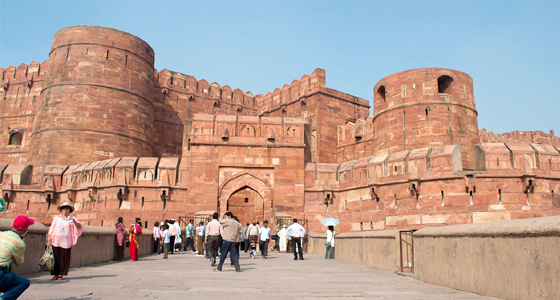
Sheesh Mahal

Tomb of Itimad-ud-Daulah

Diwan-i-Am Agra Fort

Jahangir Mahal

Jama Masjid

Anguri Bagh

Mehtab Bagh

Jawab Masjid

Tomb of Mariam Zamani

Diwan E Aam

Chini Ka Rauza Mausoleum

Tomb Of John Russell Colvin

Balkeshwar Mandir

Rawli Maharaj Temple

Rajeshwar Mandir

Shri Mankameshwar Mandir

Shahin Arts

Agra Art Gallery

Spiritual Museum

Wildlife SOS

Gurudwara Guru ka Tal

Kalakriti Cultural & Convention Center

St. George's Cathedral

Motilal Nehru Park

Korai Village Agra

Taj Gallery

New Nice Marble Art & Handicrafts
Popular tour packages for agra.

One Day Excursion to Agra from Delhi

2 Day Excursion to Agra from Delhi
1 NIGHTS/2 DAYS
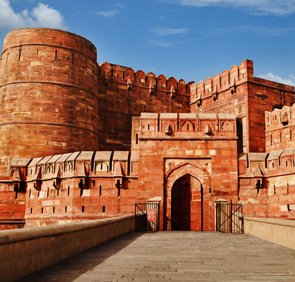
07 NIGHTS/08 DAYS

Best of Sikhism Tour
13 NIGHTS/14 DAYS
Top Things to Do & See on Your Trip to Uttar Pradesh
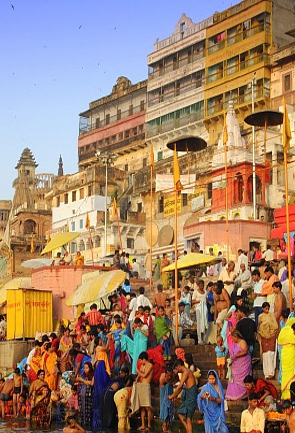
Pilgrimages

Arts & Crafts
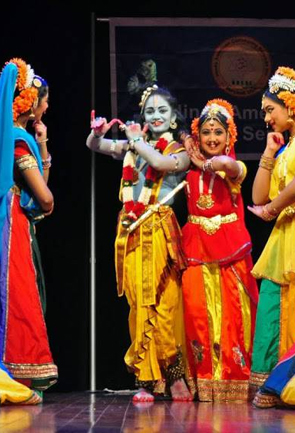
Folk Dance & Music
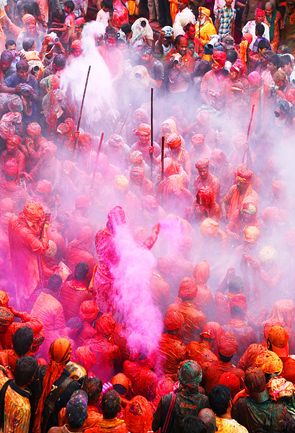
Fairs & Festivals

Gardens & Park
Uttar pradesh travel information.
Find the relevant information on how to plan hassle free trip to Uttar Pradesh. We have put together the best travel guide which include details on how to reach Uttar Pradesh by different means of transport along with authentic information on various trains, flights and buses. Find details on best time to visit Uttar Pradesh with average temperature in different seasons. Also explore the best places to visit for cultural tour, heritage attractions or sightseeing tour in the state with the help of the map made easy for you to navigate.
- About Uttar Pradesh
- Top Things to Do
- Top Tourist Places
- How to Reach Uttar Pradesh
- Summer Weather
- Monsoon Weather
- Winter Weather
- Uttar Pradesh Travel by Road
- Uttar Pradesh Travel by Train
- Uttar Pradesh Travel by Air
- Holiday Packages
- Culture & People
- Tourism Map
- Accommodation

Plan Your Trip
Request a FREE Quote


- 2 Weeks for Couple
- 2 Weeks for Family
- Thailand Lantern Festival
- Indonesia(Bali)
- South Korea
- China (HK, Taiwan)
- Itinerary Ideas
- Asia Highlights Travel Reviews
- Thailand Travel Reviews
- Vietnam Travel Reviews
- Cambodia Travel Reviews
- Japan Travel Reviews
- Myanmar Travel Reviews
- China Travel Reviews

Essential Guide to Visiting the Taj Mahal
Taj mahal location, how to get to agra and the taj mahal.
- Best Time to Visit
- Entrance Cost and Rules
- What to Bring with You
- What to Wear at the Taj
- Why Book a Guided Tour
- How to See Without Going Inside
Where to Stay in Agra
What else is there to do in agra.
The Taj Mahal is one of the Seven Wonders of the World and on the top of everyone's list when visiting India. This incredible white marble structure is not only beautiful but is also a testament to the love that Mughal emperor Shah Jahan had for his wife Mumtaz Mahal.
Built in the mid-1600s over a period of 22 years using 20,000 workers, the Taj is truly a testament to otherworldly beauty and architecture.
On this page, you'll find everything you need to know when visiting the Taj Mahal including where it is, how to get there, what to wear, entrance fees, the best time to visit, and other things to do nearby.
The Taj Mahal is located in Agra, India. Agra is a small city in North India a few hours drive or 200 kilometers (125 miles) from the capital of New Delhi. Agra is often visited on the Golden Triangle travel route which includes the most popular stops in India: Delhi, Agra, and Jaipur.
Agra was a very important city during the Mughal rule of North India, but since then has a decrease in political importance and today only has 1.7 million people. The Taj Mahal is located to the east of the city near the banks of the holy Yamuna River.
Discover real reviews of Highlights Travel Family 's best-rated service across trusted platforms.
Agra is normally visited by travelers on the Golden Triangle circuit because it is around 200 kilometers from both Delhi and Jaipur. You can also make a day trip from Delhi to Agra to see the Taj Mahal and then return to Delhi. We recommend staying in Agra for 1 or 2 days to see some of the other World Heritage Sites there such as the Agra Fort and Baby Taj.
You can reach Agra from Delhi by train. The high-speed Shatabdi Express has trains that run between Agra, Delhi, and other cities in Rajasthan. A train from Delhi to Agra will likely take around 1 hour and 20 minutes.
You can also travel to Agra from Delhi by private car on the Yamuna Expressway. If you book a Golden Triangle tour, traveling between the three cities by private car will be included in the price. The car journey from Delhi to Agra takes around 3 hours and is often more comfortable and convenient than traveling by train.
Once you reach Agra, the Taj Mahal will be easy to reach from your hotel by either private car or rickshaw. We recommend taking a private car with a guide in order to avoid scams at the entrance.
Best Time to Visit the Taj Mahal
The Taj Mahal can be visited all year round, but the best time to visit is from November to February . This period is during the winter months in India when the weather is cool and dry and the skies are clear.
This time of year is the high season for visiting the Taj, so you can expect there to be larger crowds visiting this world wonder. During December and January, the Taj Mahal is often shrouded by fog in the morning so if you want the perfect sunrise shot, its best to go in November or February.
You can also visit the Taj Mahal from March to May and June to October. March, April, and May are the hot season in Agra with temperatures reaching up to 40°C (104°F). During the hot season, we recommend visiting in the early morning to catch the beautiful sunrise and avoid the heat.
March is the best hot season month to visit because the temperatures are still manageable and the crowds are much smaller.
June to October is the rainy season in Agra. This season is slightly cooler than the hot season but is still warm and humid. Agra doesn't get as much rain as other parts of India. The wettest month in Agra is August with an average of 272mm (10.7 inches) of rain.
You can still see the Taj during the rainy season, but you will need to spend a few more days in Agra to make sure that you have time to see everything and avoid the showers.
September is a good month to go for affordable hotel rates and travel. The last two weeks of September are often dry. October is the beginning of the high season and hotel prices normally rise on the 1st of the month.
Get more information on the best time to visit the Taj Mahal in a day.
Taj Mahal Entrance Cost and Rules
The Taj Mahal is open from 6 am to 7 pm every day except for Fridays when it is closed for prayer. The Taj also reopens every day from 8:30 pm to 12:30 am for 4 nights around the full moon.
The price of entrance tickets into the Taj is 1,100 rupees ($15) for non-Indians. You can get a 50 rupee discount if you pay with a card. Children younger than 15 can enter for free whether they are foreigners or Indians. Your ticket comes with a water bottle, shoe covers, and a map of Agra. Shoe covers must be worn inside the main building of the Taj Mahal.
The full moon night viewing tickets cost a little less than day tickets. For foreigners, night entrance is 750 rupees ($10) .
Taj Mahal tickets can be purchased at the entrance gates or online.
There are three entrance gates into the Taj Mahal complex: South, East, and West. The West Gate is the main date and normally has the longest lines throughout the day. The South Gate is the least used as it is in the heart of a congested market and a little difficult to access. The East Gate is most used by foreign visitors because it is close to many nice hotels and often has shorter lines.
The Taj Mahal is India's most important monument and has high levels of security at the entrance. When entering the Taj, your bags will be searched and no large bags are allowed inside.
Other items that are not allowed inside the Taj include food, cigarettes and lighters, tripods, and lighting equipment. Cameras are also not allowed inside the mausoleum as taking photos of the inside is prohibited.
If you bring a big bag or backpack, you may want to store it in a locker outside the monument so as to decrease your time at the security check.
What to Bring with You to the Taj
Because security is so high at the Taj Mahal and many things are not allowed, it's a good idea to only bring a small bag with a few belongings. Some items you may want to bring when visiting the Taj include:
- The Taj Mahal was constructed to be immensely beautiful. It is completely symmetrical and surrounded by gardens. The white walls of the Taj reflect the colors of the sky from orange in the early morning to dark blue at night.
- The Taj Mahal is a tomb containing the bodies of emperor Shah Jahan and his wife Mumtaz Mahal and is decorated to depict an image of heaven. The marble of the Taj is carved into beautiful floral designs and inlaid with semiprecious stones from Persia, Russia, Afghanistan, China, and the Indian Ocean.
- The story of its creator, Shah Jahan, is a sad one with his son betraying him after the death of Mumtaz Mahal and locking him away in the tower of the Agra Fort where he could still see the Taj from a distance.
Sunblock is especially important during the hot season, but you should consider wearing it no matter what time of year you visit the Taj. The sun reflects off of the white marble walls and garden pools causing your skin to be more exposed to the sun's rays than normal.
Bug spray is also important, especially during the rainy season, as the Taj is located next to the Yamuna River and sometimes has many mosquitos.
What to Wear to the Taj Mahal
There is no dress code for entering the Taj Mahal, but even so, it is important to be respectful of the local culture. It's a good idea to wear loose and long clothing. For women, a loose long-sleeved shirt and loose pants or a skirt are perfect. This way, you will be respectful and still stay cool in Agra's hot climate.
The general rule for how to dress appropriately in India is to cover everything above the knee and your shoulders.
To enter the mosque that is located on the grounds of the Taj Mahal, women will need to cover their heads, shoulders, and knees.
Why You Should Book A Guided Tour
Visiting the Taj on a guided tour is the best way to see this world wonder. Guides will take you to the Taj in a private car and help you get your tickets and through security. They will also show you around the Taj Mahal and give you all the information you could want to know.
Guides can also protect you from the many notorious scammers and hawkers who hang out near the Taj Mahal trying to catch unaware tourists.
If you visit the Taj with a guide, it is best to book through your hotel or through a tour company on a Golden Triangle tour. Outside the Taj, many people pose as guides who are not actually qualified to do so. To avoid this scam, make sure to book beforehand.
If you choose not to use a guide at the Taj, just make sure to keep your wits about you and turn down anyone who asks for photos or to be your guide. You can purchase an audio guide at the entrance of the Taj for around 105 rupees. Audio guides are available in many languages including English, German, Spanish, and French.
How to See the Taj Mahal Without Going Inside
Besides entering the official Taj Mahal grounds, there are a few other ways in Agra to see the Taj Mahal .
One of the most popular Taj viewing points is from Mehtab Bagh which is a large Mughal garden located just across the Yamuna river. Entrance to Mehtab Bagh costs around 300 rupees ($4) and the garden provides incredible views of the world wonder. This is an especially great place to view the Taj during sunrise.
You can also see the Taj Mahal from many hotel rooftop restaurants in Agra. You can see the beautiful mausoleum for free from the roof of the Taj Ganj hotel. You can also get great views of the Taj from the dining room of the Oberoi Amarvilas luxury hotel.
Lastly, you can see the Taj Mahal at a distance from the windows of the Agra Fort . The Agra Fort was also partially built by Emperor Shah Jahan and is the building where he was imprisoned by his son Aurangzeb.
Because Agra is such a large tourist area in India, the city is full of hotels for all budgets many of which are located near the Taj Mahal and offer rooftop views. Luxury hotels are particularly popular in the city and are great places for fine dining and spa experiences.
The Oberoi Amarvilas is the best hotel in Agra for luxury experiences. It is located around 600 meters from the Taj Mahal and its architecture was inspired by the monument. The hotel has fountains pavilions, gardens, and pools. It also has an incredible dining room where you can sip champagne while watching the sunset behind the Taj.
Another great luxury hotel in the city is Jaypee Palace. This hotel sits on 25 acres of and that is full of pools, gardens, and palm trees. Jaypee Palace is located in the center of Agra and close to all major attractions. They also have an outdoor dining location that features nightly performances.
If you are looking to stay in a resort, our favorites are the Trident and ITC Mughal. If you are looking for more affordable options then the DoubleTree by Hilton is a great one that also offers views of the Taj Mahal.
While the Taj Mahal is without a doubt the main attraction in Agra, there are plenty of other things to see in this ancient Mughal capital.
The Agra Fort is also a stunning location and is a UNESCO World Heritage Site that was built in the 16th-century. Inside the fort, you see a number of palaces that were built by different Mughal kings and also the place where Shah Jahan was imprisoned.
If you are interested in beautiful architecture, you can also go and see the tomb of Itimad-ud-Daulah . This tomb is only about a 25-minute drive from the Taj Mahal and is often called the "Baby Taj" because it was one of the architectural inspirations for the world wonder. This tomb contains the grandfather of Shah Jahan and was the first Mughal structure to be made of white marble.
Another UNESCO World Heritage site near Agra is Fatehpur Sikri which is the ruins of an ancient city that was originally built by the Mughal emperor Akbar as a place for his family to live. The city is made of red sandstone and contains the beautiful ruins of palaces, mosques, and homes.
If you are looking for some socially responsible activities, you can check out the Elephant Conservation Centre which is run by Wildlife SOS and works on the rehabilitation and care of rescue elephants. The city is also home to Sheroes Hangout which is a small cafe that is run by victims of acid attacks. Here you can grab a coffee and listen to the women's stories.
Some great restaurants in Agra include the fine dining Esphahan, the more relaxed Mama Chicken, and the delicious Pinch of Spice.
Visit India with Asia Highlights
Asia Highlights welcomes the chance to help you design your perfect trip to India. Check out the following links to learn more about our tours and get a head start on planning your hassle-free vacation today!
- 15-Day India and Sri Lanka Tour
- 12-Day India and Bhutan Tour
- 11-Day India and Nepal Tour
- 14-Day India, Nepal, and Bhutan Tour
Why Asia Highlights (10,000+ reviews & 98.8% 5-star rating)
- Save Your Time:
- Less research, more enjoyment!
- Real-time 1V1 expert planning
- Maximize Your Flexibility:
- Personal local guide and ride
- Explore at your own pace
- Celebrate Your Journeys:
- Specially-crafted family adventures
- Celebrate milestones with style!
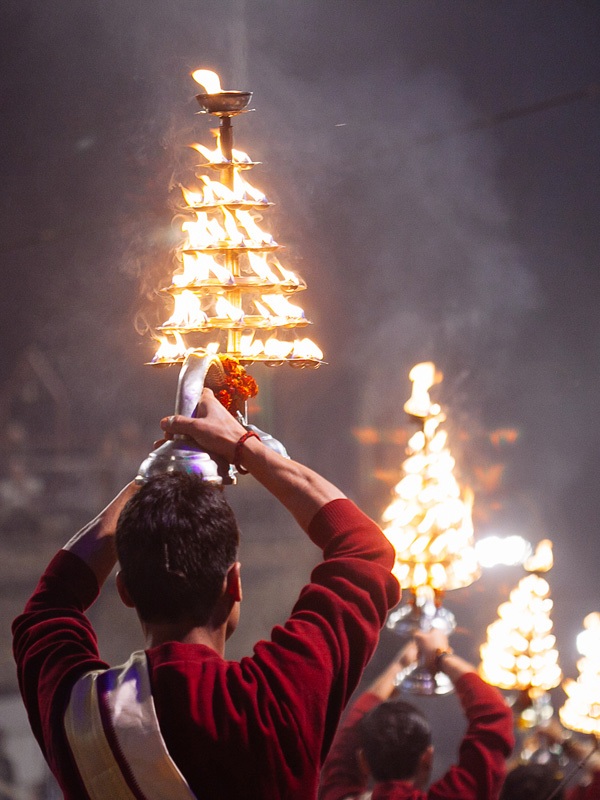
- 7-Day India Golden Triangle Tour
- 8-Day Diwali Festival in India Golden Triangle Tour 2024
- 9-Day India Tiger Safari and Golden Triangle Tour
- 9-Day India Golden Triangle with Varanasi
- 11-Day India Holi Festival Tour 2024
- 14-Day Rajasthan Tour Package for Westerners
- 14-Day Romantic Honeymoon Trip in India
- 2-Week Luxury India Tour
- 21-Day India, Nepal and Bhutan Tour
- India Itineraries 2024: from 5 Days to 1 Month
- 2 Weeks in India 2024/2025: Top 4 Itineraries
- How to Plan a Trip to India 2024/2025 for First Timers
- How to Plan an Awesome Family Trip to India in 2024
- Plan an Awesome Trip to India, Bhutan and Nepal (6 Tips)
- How to Plan an India and Nepal Trip 2024/2025
- How to Plan a Trip to India for Holi 2024
- A Complete Guide to Experiencing Diwali
- How Much Does a Trip to India Cost?
- Is India Safe to Travel? Women & Kids (Tips for 2024/2025)
- Best (and Worst) Times to Visit India 2024, Rainy Season?
- Best Times to Visit the Taj Mahal?Expert Tips in 2024
- Weather and Where to Go in India in Janurary 2024/2025
- Weather and Places to Go in India in February 2024/2025
- Weather and Places to Go in India in March 2024/2025
- India Weather & Best Places to Visit in April 2024/2025
- Weather in India in May 2024 & Travel Tips for First-Timers
- India in June: Weather & Best Places to Visit 2024/2025
- India Weather & Best Places to Visit in July 2024/2025
- India in August: Weather & Best Places to Visit 2024/2025
- September Weather in India & Tips (Places+Crowds) 2024
- October Weather in India & Tips (Places+Crowds) 2024
- Weather and Where to Go in India in November 2024
- Weather in India in December 2024 & Tips for First Visits

Jessie was amazing ! Everything from her level of English to her understanding of what we valued .
We had a good time exploring the city with Selinda!
Our guide lele is a wealth of information, Lele is very professional and very attentive to our needs. Lele is amazing. Lele got everything spot on. It probably helps that Guilin is a brilliant place to visit so Lele has great material to work with but that doesn't take anything away from how much Lele helped make it a great trip.
Our guide for Beijing was super knowledgeable and experienced and able to help us to achieve as much as we wanted within the time given. We had a fun time guided by him as he is also super humorous and you can see how he interacts with the vendors and people whom he comes by. Thank you for a very enjoyable time in Beijing and accommodating to all our needs!
Our China Highlight guide. Michael, was attentive, thoughtful and knowledgeable. He narrated many interesting historical events about Chengdu while touring around the city and having afternoon tea with us. He was thoughtful to provide us with snacks during long hikes at Leshan or walks around the city.
She was very flexible and added extra time when we needed it and we felt extremely well taken care of. She also chose the best restaurants for us,
Our tour guide Helen, was excellent, she was very kind, professional and passionate for her work and she also loves Pandas! She will take you to take the best panda photos and to know more about Chengdu city. Our tour was great, she took us to all our destinations always with the best spots: Temples, pagodas, famous streets, theaters, pandas...you name it! Everything was great.
He picked up our pre-booked boat/other excursions tickets so we were able to avoid all the long lines and chaos. He is knowledgeable of the places we visited, courteous, fun to travel with and well-versed in Chinese classics.
Tom is the guide that will take you to where no other guide will. We pushed for the experience and Tom and the team delivered more than what we could have ever asked for. His English speaking ability and his Chinese history knowledge is second to none.
More reviews
Get Inspired with Some Popular Itineraries
At Asia Highlights, we create your kind of journey — your dates, your destinations, at your pace. You can have any trip tailor made for your travel.
More Travel Ideas and Inspiration
Sign up to Our Newsletter
Be the first to receive exciting updates, exclusive promotions, and valuable travel tips from our team of experts.
Why Asia Highlights
Where can we take you today.
- Middle East
- African Safari

- Travel Agents
- Our Differences
- Privacy Policy

Address: Building 6, Chuangyi Business Park, 70 Qilidian Road, Guilin, Guangxi, 541004, China
Taj Mahal: A Tour from the Top
A new perspective on an indian icon.
By Google Arts & Culture
The Taj Mahal is one of the great artistic treasures of the world, an instantly-recognisable emblem of India itself. It’s a mausoleum, or tomb, commissioned in 1632 by Emperor Shah Jahan, one of the greatest Mugal Emperors, to house the body of his wife Mumtaz Mahal. Here, you can take in the famous architecture and surroundings in Street View. But what does it look like from up high?
From the top of this minaret, we have a good view across the entire river plain, and of the Taj Mahal itself. The building is perfectly symmetrical, with four minarets, four small pavilions, and one iconic central dome.
Up here, we can see the richly-decorated facade. Before the Taj Mahal, most grand buildings were made of sandstone, but when commissioning this, the emperor Shah Jahan preferred white marble inlaid with semi-precious stones.
Red sandstone can be seen being used to create a remarkable contrast in the smaller - but no less elaborate - building to the west, a mosque, completed in 1643. Inside, the tiled floor has space for precisely 569 worshippers.
A matching building known as the jawab (answer), is found to the east. This was built to provide a perfectly symmetrical view, but may have also been used as a private guesthouse.
Standing on the roof of the mosque, we have a better view of the decoration. The inlaid stone shows no expense was spared in this devoted lover's monument.
To the south are the gardens, laid out in a grid divided by pathways and pools. This style was very popular in the Mughal Empire, and designed to invoke thoughts of the gardens of paradise as described in the Qur'an.
While we're here, why not take a look around the rest of the site and discover the many more treasures of the Taj Mahal .
Hampi - Poetry in Stone
Archaeological survey of india, innovations in architectural astronomy: the jantar mantar observatory, incredible india, mahabalipuram - sculpture by the sea, shigmo festival in goa: the beginning, rajghat: varanasi through the millenia, mahabalipuram: life, divinely preserved in stone, sarnath - turning the wheel of law, hampi: the saga of a lost city, vignettes of ajanta & ellora, yaoshang of the youth: holi in manipur.

The Taj Mahal: A Timeless Wonder and Symbol of Eternal Love
- June 19, 2023
- Views: 3585

The Taj Mahal, a magnificent architectural marvel located in Agra, India, stands as a testament to the enduring love of Emperor Shah Jahan for his beloved wife, Mumtaz Mahal. This awe-inspiring monument has captivated people from all corners of the globe with its timeless beauty and rich history. In this article, we will delve into the mystique surrounding the Taj Mahal and explore its captivating features, historical significance, and enduring legacy.
Table of Contents
The origins of taj mahal.
The Taj Mahal, one of the most renowned architectural masterpieces in the world, was indeed commissioned by Emperor Shah Jahan in the 17th century. The emperor ordered its construction as a mausoleum to honor the memory of his beloved wife, Mumtaz Mahal, who tragically died while giving birth. The construction of this iconic monument commenced in 1632 and required nearly 20 years to reach its completion in 1653.
The Taj Mahal was conceptualized and designed by the esteemed architect Ustad Ahmad Lahauri. It is believed that Shah Jahan drew inspiration from various architectural styles, blending elements of Persian, Islamic, and Indian designs to create this majestic structure. The monument stands as a testament to the remarkable craftsmanship and artistic vision of its builders and artisans.
Constructed primarily out of white marble, the Taj Mahal showcases intricate detailing and exquisite craftsmanship. Its symmetrical layout and meticulous precision in its design are awe-inspiring. The central feature is the main mausoleum, housing the tombs of Shah Jahan and Mumtaz Mahal. Four elegant minarets grace each corner of the platform, adding to its grandeur.
The Taj Mahal is renowned for its picturesque beauty, especially during sunrise and sunset when the sunlight casts a mesmerizing glow upon its gleaming white facade. The reflection of the monument in the surrounding reflecting pools, known as the Charbagh gardens, further enhances its ethereal charm.
Recognized as a UNESCO World Heritage site, the Taj Mahal stands as an enduring symbol of love, devotion, and architectural brilliance. It continues to captivate millions of visitors from around the globe who come to witness its magnificence and pay homage to its historical significance.
The Architectural Splendor
The Taj Mahal is a masterpiece of Mughal architecture, blending various architectural styles including Persian, Islamic, and Indian influences. The monument is made entirely of white marble, reflecting a sense of purity and elegance. Its symmetrical layout and meticulous detailing make it a visual delight.
Symbolism and Design
The design of the Taj Mahal is rich in symbolism, each element carefully crafted to convey deeper meanings. Let’s explore the symbolic significance of its key features:
- Central Dome: The central dome of the Taj Mahal is an architectural marvel. It symbolizes the celestial realm, representing the heavens and the eternal abode of Mumtaz Mahal, the beloved wife of Emperor Shah Jahan.
- Four Minarets: Rising gracefully from the corners of the main structure, the four minarets hold symbolic significance. They represent the four corners of the world, symbolizing the global reach and influence of the Mughal Empire during its zenith.
- Intricate Carvings: The walls of the Taj Mahal are adorned with exquisite carvings and intricate patterns. These carvings are not merely decorative but carry profound symbolism. They depict verses from the Quran, sacred Islamic texts, and evoke a sense of divine beauty and spiritual devotion.
- Calligraphy: Skillfully woven into the intricate carvings, calligraphy plays a vital role in the Taj Mahal’s symbolism. The verses from the Quran inscribed on the walls are a testament to the Islamic faith and convey messages of love, unity, and devotion.
- Floral Motifs: The Taj Mahal is adorned with delicate floral motifs, crafted with precision and finesse. These motifs symbolize abundance, beauty, and the ephemeral nature of life. They serve as a reminder of the transient nature of human existence and the enduring beauty of love.

The amalgamation of these symbolic elements creates a harmonious and awe-inspiring visual experience for visitors. The Taj Mahal’s design transcends its architectural brilliance and becomes a profound representation of love, spirituality, and cultural heritage.
Meticulous Craftsmanship
The Taj Mahal showcases exceptional craftsmanship. Skilled artisans from across the Mughal Empire were involved in its construction. The delicate marble inlay work, known as “pietra dura,” is a testament to their expertise. The use of semi-precious stones such as jasper, jade, and turquoise enhances the beauty of the monument.
The Love Story Behind Taj Mahal
The Taj Mahal stands as a symbol of eternal love. Emperor Shah Jahan was deeply devastated by the death of his wife, Mumtaz Mahal. He dedicated this grand monument to immortalize their love. The Taj Mahal serves as a poignant reminder of the power of love and the enduring bond between two souls.
Taj Mahal’s Historical Significance
Beyond its romantic significance, the Taj Mahal holds immense historical importance. It reflects the rich cultural heritage of the Mughal Empire and their contributions to art, architecture, and literature. The monument serves as a historical landmark, shedding light on the opulence and grandeur of the Mughal era.
Taj Mahal: A UNESCO World Heritage Site
Recognizing its outstanding universal value, the Taj Mahal was designated as a UNESCO World Heritage Site in 1983. This prestigious accolade highlights the monument’s significance and the need for its preservation for future generations to appreciate and admire.
Taj Mahal’s Impact on Tourism
The Taj Mahal is a major tourist attraction, drawing millions of visitors from around the world each year. Its timeless beauty and architectural splendor leave an indelible impression on all who behold it. The tourism industry in Agra thrives due to the monument, generating employment opportunities and economic growth for the region.
Preservation Efforts
Preserving the Taj Mahal is of paramount importance. Over the years, pollution and environmental factors have taken a toll on the monument’s pristine white marble. The Indian government and various organizations have undertaken conservation efforts to protect and restore this iconic structure, ensuring its longevity.

Fascinating Legends and Myths
The Taj Mahal is shrouded in fascinating legends and myths. From tales of hidden treasure to romantic folklore, these stories add an air of mystery and intrigue to the monument. Exploring these legends can further enhance the experience of visiting the Taj Mahal.
Visiting the Taj Mahal
Visitors to the Taj Mahal can immerse themselves in its grandeur and beauty. From walking through the majestic entrance gate to marveling at the intricate details of the marble façade, every step reveals new wonders. The serene gardens and reflective pool add to the overall enchantment of the site.
Experiencing the Taj Mahal at Different Times
The Taj Mahal offers a different experience depending on the time of day. At sunrise, the monument is bathed in a soft, golden glow, while at sunset, the marble changes color, reflecting hues of orange and pink. The ethereal beauty of the Taj Mahal under the moonlight is a sight to behold.
The Taj Mahal in Popular Culture
The Taj Mahal’s iconic status has made it a popular subject in literature, music, and films. Its beauty and symbolism have inspired countless artists and writers worldwide. The monument’s enduring presence in popular culture further amplifies its mystique and allure.
Taj Mahal: Inspiration for Other Monuments
The Taj Mahal’s architectural excellence and timeless beauty have influenced the design of numerous monuments around the world. Its iconic dome, minarets, and intricate detailing have become a source of inspiration for architects and designers, leaving an indelible mark on architectural history.
The Taj Mahal stands as an eternal symbol of love, beauty, and architectural brilliance. Its majestic presence has enraptured the hearts of millions, transcending time and borders. As a UNESCO World Heritage Site, it serves as a testament to human ingenuity and the power of love’s enduring legacy.
How much does it cost to visit the Taj Mahal?
The entry fee for visiting the Taj Mahal varies for domestic and foreign tourists. As of 2023, the ticket price for foreign tourists is approximately USD 20.
Can visitors enter the Taj Mahal at night?
No, the Taj Mahal is not open for night visits except during special events. However, visitors can witness the Taj Mahal’s enchanting beauty during sunrise and sunset.
Are there any restrictions on photography inside the Taj Mahal?
Photography is allowed in most areas of the Taj Mahal complex, except for the main mausoleum. However, the use of tripods and professional photography equipment requires prior permission.
Is there a dress code for visiting the Taj Mahal?
Visitors are advised to dress modestly and respectfully. It is recommended to avoid revealing clothing and to dress comfortably for the weather, as the monument is located in a hot climate.
Are there any nearby attractions to visit along with the Taj Mahal?
Agra, the city where the Taj Mahal is located, offers several other attractions worth exploring. These include Agra Fort, Fatehpur Sikri, and the Tomb of Itimad-ud-Daulah.
In conclusion, the Taj Mahal continues to captivate visitors with its enigmatic charm and breathtaking beauty. Its intricate architecture, rich history, and enduring love story make it a must-visit destination for travelers seeking an unforgettable experience. Plan your visit to this iconic wonder and immerse yourself in the mystique of the Taj Mahal.
You Might Like

Discover Jaipur: The Pink City’s Rich Heritage
Leave a reply cancel reply.
Save my name, email, and website in this browser for the next time I comment.
Notify me of follow-up comments by email.
Notify me of new posts by email.

Sign Up Today
Start your 14 day free trial today

The History Hit Miscellany of Facts, Figures and Fascinating Finds
Agra, Uttar Pradesh, India
The Taj Mahal is an opulent, world-famous mausoleum in Agra, India and a UNESCO World Heritage site.

Sarah Roller
24 nov 2020, @sarahroller8.
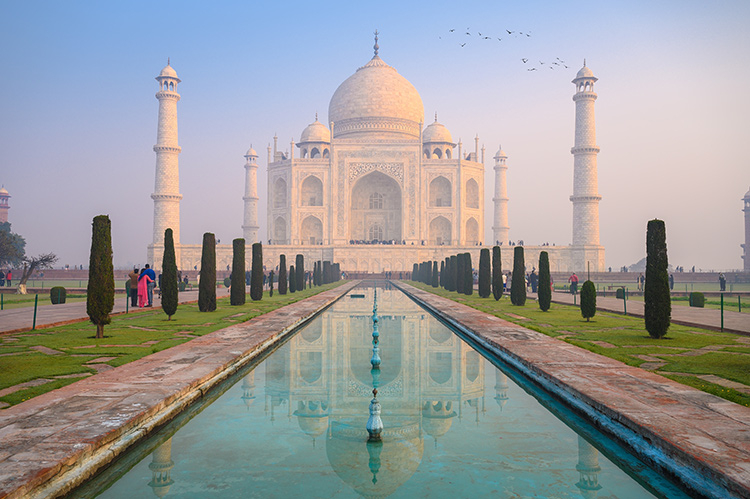
About Taj Mahal
The Taj Mahal is an iconic structure and a UNESCO World Heritage site in the city of Agra in India.
History of the Taj Mahal
Built between 1631 and 1654, the construction of the Taj Mahal was ordered by the ruling emperor Shah Jahan as a mausoleum for his favourite wife, Empress Mumtaz Mahal.
The Empress had died in 1631 whilst giving birth to the couple’s fourteenth child, Gauhara Begum and her jade and jasper adorned coffin was placed in the centre of the Taj Mahal, although her body and that of her husband (buried there later) are actually contained several floors below.
The white marble structure of the Taj Mahal, with its central dome flanked by arches and smaller domes as well as minarets is famed for its incredible symmetry and opulent design. Inside, the Taj Mahal is lavishly decorated with plant life imagery and Koranic calligraphy, each aspect of which is entirely individual. In fact, it is believed that approximately 20,000 workers toiled to create the Taj Mahal.
Nearby are several other beautiful buildings, including the Taj Mahal’s mosque and the Jilaukhana gated complex, all of which add to the overall symmetry of the site.
Some of the Taj Mahal’s original decoration has been looted over the centuries and the white colour structure is suffering from the effects of pollution.
The Taj Mahal today
The Taj Mahal remains one of the most visited sites in the world, and it’s always busy. Many Western tourists go for sunrise – on a clear day the dawn light gives the marble a beautiful warm glow to it, and the mist rising off the river adds to the atmosphere. The Indian writer Rabindranath Tagore described the Taj Mahal as being “ like a solitary tear suspended on the cheek of time” and it truly is a brilliant sight. Sunrise or sunset are also widely regarded as the best time to get photographs, as well as the most pleasant temperatures. There is little shade and it can be exhausting under the hot Indian sun.
The complex itself is huge, and takes several hours to explore fully. – don’t miss the adjoining mosque and museum on site too. The gardens are extremely peaceful: look out for the gardeners cutting the lawns by hand.
Getting to the Taj Mahal
Some visitors simply go to Agra for the day from Delhi (the train is about 3 hours each way), but in reality it’s worth basing yourself here for a couple of days so you can make the most of what the city has to offer. If you plan on getting to the Taj Mahal for sunrise or sunset, you’ll probably also want a place to stay.
The Taj is right by the river, slightly to the east of the centre of Agra. Tuk tuks or taxis will get you there in 20 minutes or so.
Featured In
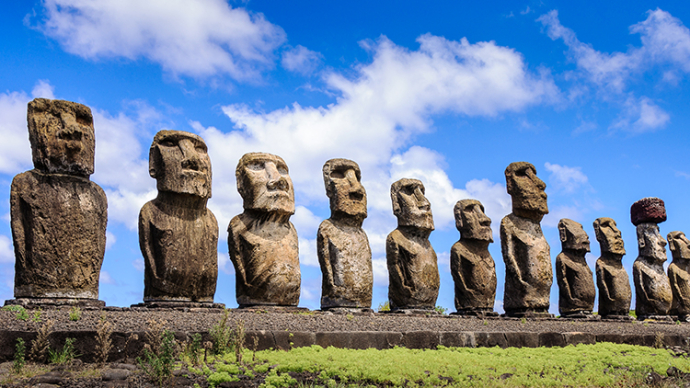
Top UNESCO World Heritage Sites
UNESCO protects over 1,000 Heritage Sites around the world. But which ones are the must-sees? From the Pyramids of Egypt to the Taj Mahal, here are 10 spectacular UNESCO locations that are well worth a visit.
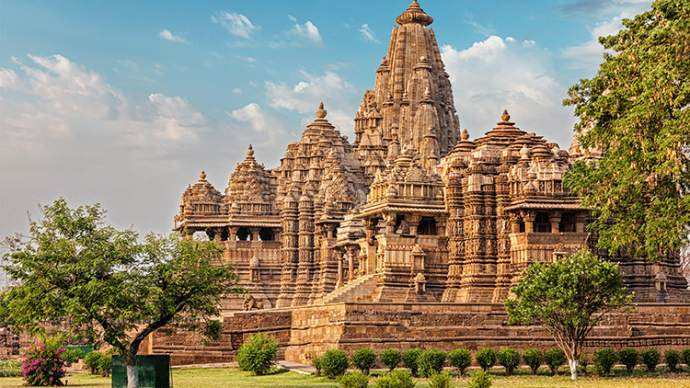
India Historic Sites
Home to the Taj Mahal and the Red Fort, India's historic sites are some of the most iconic and instantly recognisable in the world. Here's our pick of 10 that make for essential visiting for any history buff.

Related Articles
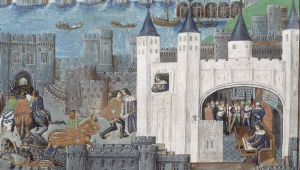
5 More Daring Escapes From The Tower of London
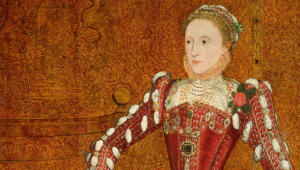
How Many Children Did Henry VIII Have and Who Were They?
Watch and listen.

Bring Out Your Dead: The Great Plague of 1666

The Coronations of Tudor Queens
You may also like.
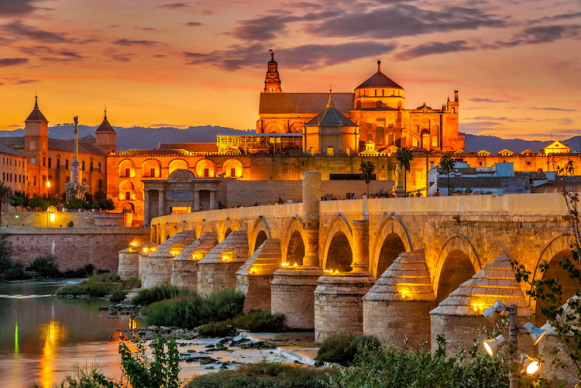
The 8 Best UNESCO World Heritage Cities
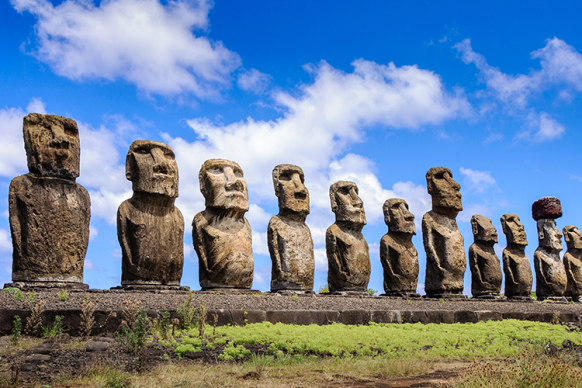
The Top 10 UNESCO World Heritage Sites
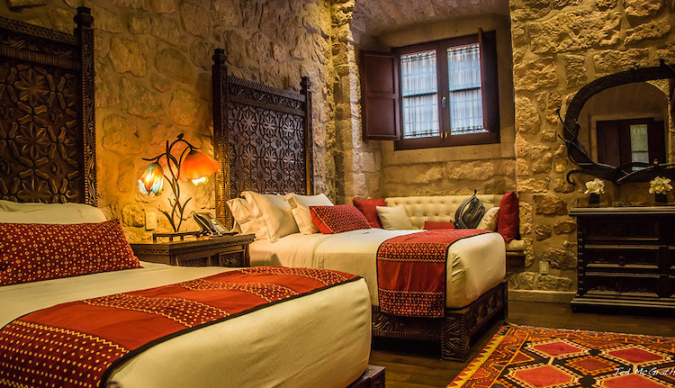
10 of the Oldest Hotels in the World
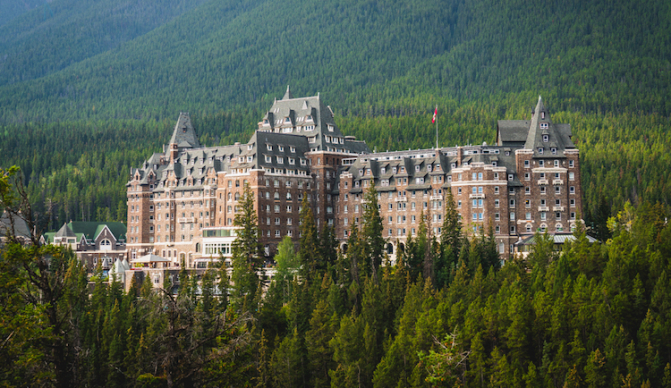
12 of the Most Haunted Hotels in the World
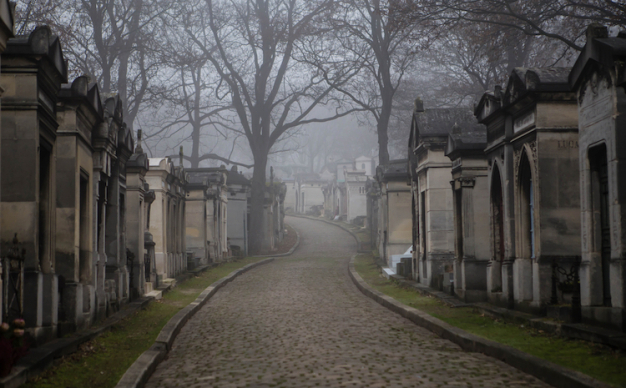
12 Eerie Cemeteries to Visit Around the World
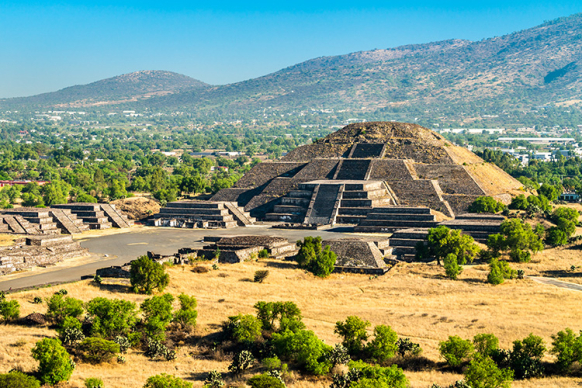
15 Must-Visit Pyramids Around the World
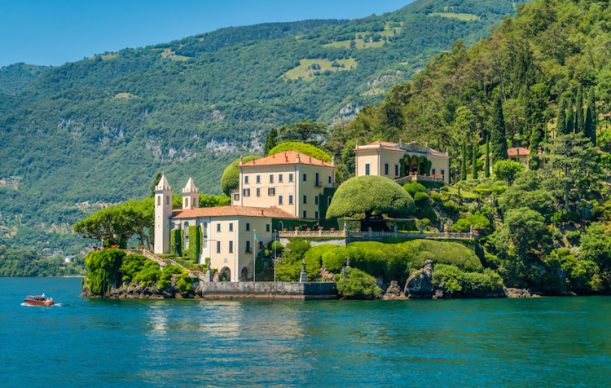
6 Incredible Historical Locations from the James Bond Films
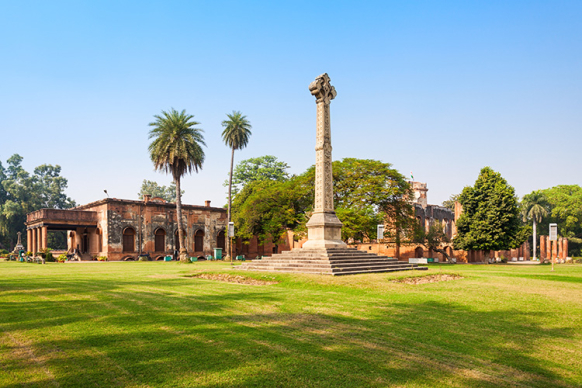
10 Key Historic Sites from the British Empire
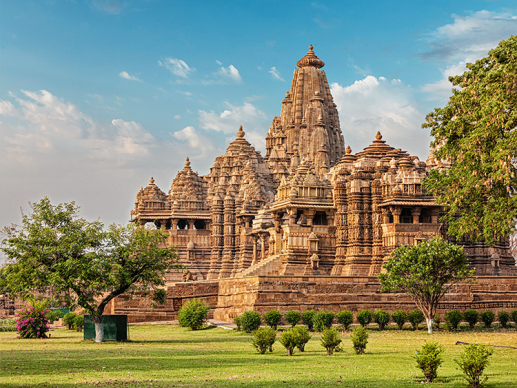
The 10 Best Historic Sites in India
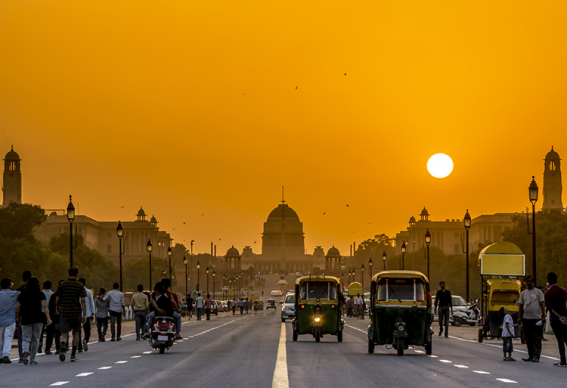
10 of the Best Historic Sites in Delhi
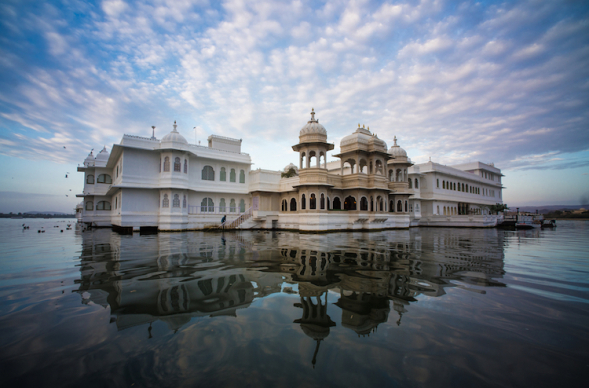
Taj Lake Palace
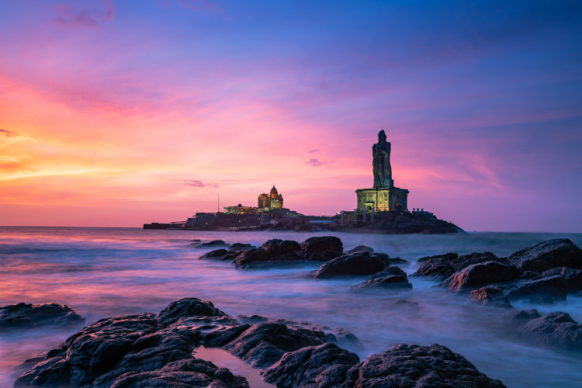
Kanyakumari
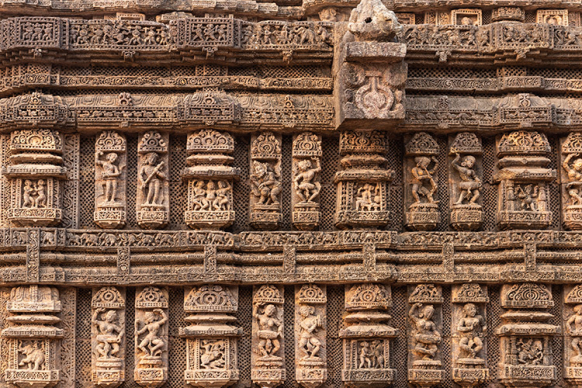
Sun Temple of Konark
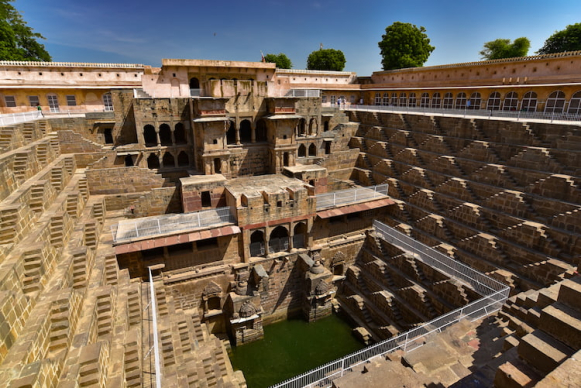
Chand Baori
- Related topics :
- Architecture

Salman Rushdie on the enduring beauty of the Taj Mahal
- UNESCO World Heritage Sites
- Overtourism

A husband's love built the Taj Mahal—but cost him an empire

Top 10: Iconic Places to Photograph
- Papua New Guinea
- United Kingdom
- Easter Island
- Machu Picchu
- Photography

13 Things To Know Before Visiting The Taj Mahal
W hen it comes to truly great monuments, it doesn't get much more iconic than the ivory-white marble, and satisfying symmetry, of the Taj Mahal. Perched on the banks of the river Yamuna in Agra, India, countless tourists flock to its gates each year, for an all-important glimpse of what is often heralded as the most beautiful building in the world. Some 20,000 of the most skilled craftsmen from India and Central Asia worked on this ornate masterpiece, featuring thousands of sparkling semi-precious stones, among other delicate materials.
You've probably spotted it in pictures any number of times, but experiencing the allure of the Taj Mahal in person is nothing short of otherworldly. It's a must-see UNESCO World Heritage Site , which it became in 1983, and was even declared the winner of the New7Wonders of the World initiative in 2007. But before you visit in the flesh, it's a good idea to get familiar with everything there is to know about the famous "monument of love". From how much tickets cost and where to snap the best picture, to the ideal time of day to arrive, here's how to make the most of your once-in-a-lifetime trip.
Read more: 28 Bucket List Destinations That Everyone Needs To Experience At Least Once
It's Pretty Convenient To Visit
Standing tall and proud in the bustling city of Agra, the Taj Mahal is about four hours north of the country's capital, Delhi. Agra is the most populated state in India, which means there are multiple different options for getting here. The fastest route to the Taj Mahal would be to fly. If you're already in India, your best bet is to arrive at Pandit Deen Dayal Upadhyay Airport, in Agra — just over 4 miles from the city center. But if you're coming from outside of the country, the nearest major airport is the Indira Gandhi International Airport in Delhi.
From here, Agra is easy enough to reach by train. You'll want to arrive at Agra Cantt Railway Station, with several superfast, express trains running to and from all the major cities, including Mumbai, Kolkata, and Delhi. If you'd prefer to take the bus, Agra also has a well-developed road network, which you can access from various nearby hubs, including Delhi, Jaipur, and Varanasi. Just make sure you come into the Idgah Bus Stand in Agra — the main bus terminal.
Whichever transport method you choose, you'll need to take a taxi or an auto-rickshaw to reach the Taj Mahal from Agra's center. Be sure to haggle with the driver to avoid paying hefty tourist prices, especially since they won't be able to drop you right outside the Taj Mahal. Vehicles aren't allowed within 500 meters (1640 feet) of the monument because of pollution concerns.
You Can't Visit On Fridays
From sunrise to sunset, on almost every day of the week, you're free to soak up the Taj Mahal in all its splendor — except on Fridays, when it's closed to allow practicing Muslims to worship. You might want to pass up on a weekend visit, too, just to avoid the huge swathes of crowds at every turn.
Settle on an early-morning strategy , or go for a "last thing at night" visit — the Taj opens 30 minutes before sunrise and closes 30 minutes before sunset. Sunrise is truly magical, thanks to a warm glow descending over its pristine white marble. And with fewer people around, you'll likely have the space and time to fully appreciate all of the monument's intricacies, without distraction. Before sunset is just as rewarding, as the changing colors of the sky create an exquisite backdrop.
There isn't exactly a best time to visit India — each season comes with its pros and cons — but think about your priorities. If you prefer cooler temperatures, visit in the winter, between October and March. Just remember that you'll have to contend with thousands of other tourists with the same idea. Plus, it can get foggy, which may obscure your view. April to May will be hot and humid, but there will be fewer tourists around. That leaves June to September — monsoon season. You may get caught in a downpour, but even fewer visitors are prepared to brave it during this time, and accommodation prices are much cheaper.
It Took Around 20 Years To Build
Visiting a historic monument is never quite the same if you don't know the full story, so don't plan this trip of a lifetime without doing your homework first. You'll find that understanding the history gives you a much deeper respect for the Taj Mahal, and allows you to really take in all that this immense structure has to offer.
To give you a little background, the iconic monument we all know and love was commissioned by the fifth Mughal Emperor, Shah Jahan, as a memorial for his third wife, Mumtaz Mahal -- she died during childbirth in 1631. The building process was started almost immediately after her tragic death and took around 20 years to complete. As well as incredible white marble from the Indian state of Rajasthan, materials for the Taj Mahal were sought from all over the world, including turquoise from Tibet, white sapphire from Sri Lanka, and jade imported from China. Around 1,000 elephants were also thought to be involved in the construction process, transporting these special materials across borders, and helping to lay them in place.
When the Taj Mahal was finally finished in 1653, there were rumors that the thousands of laborers who helped create it had their thumbs chopped off, so that no such monument could ever be built again! Whether this holds true or not, the Emperor was also buried here after he died in 1666, alongside his beloved wife.
You Need To Wear Shoe Covers
A visit to the Taj Mahal can feel a little overwhelming and be a lot to take in. So much so that it may be easy to forget it's also a mausoleum — the final resting place of the Emperor and his true love. It's really important to be respectful of the rules around the monument, including covering your shoes when you go into the burial chamber.
While most temples in India require you to take off your shoes completely, the Taj Mahal simply asks tourists to use shoe covers, which are given to you in a fetching light blue shade, at the ticket booth when you arrive. These are used to prevent dust particles from being tracked into the mausoleum and to keep its marble-clad surfaces as shiny and clean as possible. On your way out of the Taj Mahal, be sure to put these disposable shoe covers, and any rubbish that you have, in the trash cans provided. Sadly, the world-famous monument has suffered from plagues of litter in recent years.
Tickets Cost More For International Tourists
Don't be surprised to see that domestic tourists pay much less for the privilege of gawking at the Taj Mahal. Indian citizens are charged 50 rupees (approximately $0.70), while foreign visitors must pay 1,100 rupees ($15.50). You'll need to part with even more money if you want to go inside the mausoleum itself — there's an additional 200 rupee fee ($2.50), but it's worth it. Plus, the foreign tourists' ticket comes with shoe covers, a water bottle, a map, as well as a bus or golf cart service, which takes you to the nearest gate. A real lifesaver in Agra's blistering heat. Bear in mind that your ticket is valid for one visit only, but gives you three blissful hours to explore the Taj Mahal.
If you plan to buy your ticket on-site, there are separate counters for domestic and foreign tourists, so be sure to line up accordingly. Both of these booths are likely to be busy with long, snaking queues, which is why it's sensible to arrive as early in the day as you can. In fact, your best bet is to line up at the South Gate and avoid the very busy East Gate at all costs. Or, simply buy your tickets online beforehand.
You Should Know And Respect The Rules
As a UNESCO World Heritage Site, every visitor must follow certain rules and regulations inside the Taj Mahal, which have been put in place to protect its magnificence. For example, at no point should you touch the marble, or any other material inside the complex, because it could lead to erosion. As it is, each surface needs special, round-the-clock care to ensure its beauty is preserved for future generations.
Littering and smoking are also not allowed within the Taj Mahal, so make sure you do your bit to dispose of empty water bottles, and other trash, in the bins outside. If your entrance ticket allows you into the mausoleum, remember not to take any photos here and to be as quiet and respectful as you can. This houses the tomb of Emperor Shah Jahan and his wife -- for whom thousands of Muslims make the journey each year to pay their respects.
Dress Appropriately
You won't find an enforced dress code for the Taj Mahal, but it's always important to be a respectful tourist when visiting India . So, treat the monument like you would any other temple or mosque on your travels. This means keeping your shoulders and everything above your knees covered, as a sign of respect. Sure, you'll notice some foreigners wearing shorts and tank tops, but don't be swept up in this. It's often seen as disrespectful and will only invite unwanted stares.
The best thing to do is play it safe with longer, flowing trousers to keep you covered and cool, as well as kaftans or shawls to hide your shoulders. For guys, wear an overshirt on your top half and a pair of shorts that ideally go down to your knees, or play it safe with full-length pants. If you're feeling exotic, it's possible to rent traditional Indian clothes for your visit, such as a saree or a kurta pajamabut, but expect to pay extra for the privilege.
Leave These Things At Home
A dress code might not be enforced, per se, but the Taj Mahal has some pretty strict rules about what can be brought into the monument. To save yourself the hassle, avoid carrying a backpack (or anything larger than a small bag), any type of food or drink (even if it's sealed), tobacco products, drones, books, mobile phone chargers, GoPros, headphones, batteries, and tripods. And don't bother trying to sneak any one of these items in, either. The guards at security points really dig through your bag and follow a pretty elaborate frisk procedure for each person.
If you really must have one of these items on you for the day, there are lockers available at the East and West Gates that you can store them in. Having said that, it's much easier just to leave forbidden items at home, so be selective when packing your bag. Bring only your camera and your phone with you, but keep the latter on silent mode in the mausoleum.
Get A Guide
For some of the world's most iconic monuments, it could be seen as a waste of money to hire a tour guide. But not the Taj Mahal. Having an expert at your fingertips will really bring the structure to life for you, with stories, and interesting facts you might not hear otherwise. Not to mention be your own personal photographer, and of course, help you with all the best angles for these pictures. There really isn't much information within the complex itself, so it's a bit of a no-brainer. But where do you find the best guide, and how much should it cost?
If you're staying in a hotel nearby, reception staff usually have good contacts with extremely knowledgeable locals. In most cases, they'll be able to offer you a good deal. Or, you could book directly on a local tour guide website, ensuring your hard-earned money goes to a good home. Expect to pay around 2,000 rupees ($25) for a tour guide per day, but if you just want someone to show you around the monument for three hours, you're looking at somewhere near the 1,500 rupee mark ($18). These prices increase dramatically for the pushy kind of guide who lingers outside the Taj Mahal waiting for tourists. So, it goes without saying — book in advance for less stress on the day itself. If you do decide to go with a guide when you arrive, ask them for an approved identity card before you begin.
Where To Take The Best Pictures
The signature shot of the Taj Mahal (the one doing the rounds on social media) is on the approach from the South Gate. You know the one — with a reflection of its world-famous domes in the turquoise fountain, and the majestic white marble of the mausoleum providing the most perfect of backdrops. But it's nearly impossible to get a clear photo here, without other tourists straying into view. So, take your chance and snap away as soon as you arrive — it'll only get busier later on.
If you can't quite get that quintessential shot at this stage, don't be disheartened. There are plenty of other opportunities. What's more, the Taj Mahal is perfectly symmetrical, providing nearly identical views from multiple vantage points. With this in mind, explore the complex as you go and get creative, looking for new angles. One of the most underrated of these is from the mosque on the west side of the mausoleum. It provides the real money shot, and with far fewer people to contend with, too. Who could say no to red-sandstone scalloped archways, providing the most perfect frame for the undisputed star of the show — the mausoleum? Time it for the break of day at sunrise or just before nightfall at sunset, and you're onto a real winner.
Visit The Other Sites, Too
Sure, the main draw of the Taj Mahal is the ivory-white marble of its mausoleum, but there's an entire complex to explore aside from this, so don't miss out. Start with Chowk-i-Jilo Khana forecourt, which houses the main entrance. It's a stunningly beautiful, arched gateway, topped with delicate domes and adorned with floral designs. Next, make your way to the Charbagh, which means four gardens. Prepare yourself for breathtaking views as you walk through Chowk-i-Jilo Khana gateway and into this tranquil space, split into four quadrants by waterways. These gardens are reminiscent of the Koranic description of Paradise — rivers flowing with water, milk, wine, and honey — and a classic sign of the Mughal era.
As you keep moving, you'll come across the aforementioned red-sandstone mosque on the west side, and a perfect replica of it on the east side. This completes the architectural symmetry of the complex and provides a few alternative vantage points for photos. Lastly, if you have time, take in the museum, which is open between 10:30 a.m. and 5 p.m. It's brimming with exquisite miniature paintings, two marble pillars believed to have come from nearby Agra Fort, and portraits of Mughal rulers. This includes those of Emperor Shah Jahan and Mumtaz Mahal, lying in the mausoleum just a few steps away.
Expect Photo Requests
If you've explored other parts of India, you'll be well-equipped to deal with it by now. But if the Taj Mahal is your first stop in this truly magnificent country, prepare for a multitude of photo requests. This is especially true if you're tall, have pale skin, and fair hair — characteristics that tend to draw a lot of attention. From whole family photos to couples pictures, locals and Indian tourists will likely be very excited to see you in their country, and may even queue up for their chance to take a snap with you.
Unsurprisingly, this can become quite tiring, not to mention take you away from the experience at hand. But 9 times out of 10, these requests come with no malice, so don't be afraid. In fact, it's seen as a gesture of friendship. If this sounds a little strange to you, it may help to understand that many Indians don't have much exposure to fair-skinned foreigners, or may never have traveled outside India before. Having said this, it's perfectly fine to politely refuse, if you're not comfortable. Otherwise, get stuck in and enjoy meeting plenty of friendly and enthusiastic locals.
Where To Stay In Agra
It's common for tourists to visit Agra on a day trip from Delhi. But just because it's possible, doesn't mean it's the best use of time. For one thing, it makes visiting the Taj Mahal for sunrise or sunset a tall order — and you don't want to miss that. So, if time allows, try to stay at least one night in Agra to make the most of this very special monument. From budget guesthouses to royal suites with unbeatable views of the Taj, it may be comforting to know that Agra has no shortage of places to lay your head with options to suit every budget.
Taj Ganj is one of the best spots in the city, perched right next to the Taj Mahal itself. In fact, it's the closest area that you can stay to the structure, offering a range of hotels, guesthouses, and hostels. It's also a popular spot for restaurants, with a rich dining hub serving North Indian and Mughlai cuisine. The area is also dotted with craft shops selling carved Taj Mahal replicas, marble inlay work, and semi-precious stones. If you're looking for something fancier, journey just a short distance away to Fatehabad Road. This area is renowned for its upscale hotels and plush, luxury resorts, many of which offer breathtaking views of the monument from deluxe suite rooms and rooftop restaurant terraces.
Read the original article on Explore .
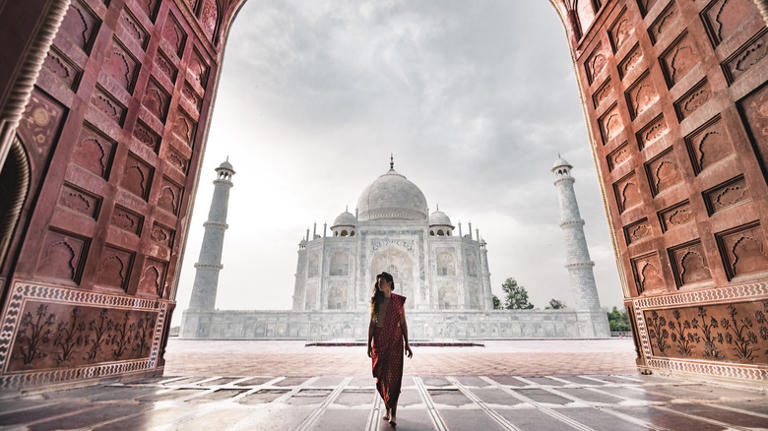
Take advantage of the search to browse through the World Heritage Centre information.
Share on social media
Unesco social media.
- Description
Reporting Trend
Reporting trend based on the frequency at which the World Heritage Committee has deliberated over this property over the past 15 years. 0 = minimum reports, 100 = maximum reports.
For more information consult the The State of Conservation of the World Heritage Forest Network
These 9 destination dupes feel like the real deal
Whether another Taj Mahal or a stand-in for the Grand Canyon, these lesser known sites rival bucket-list attractions.

Have you ever visited a bucket-list destination—the Eiffel Tower in Paris , Yellowstone National Park —only to find that a million other travelers had the same idea on the same day? Overtourism is real, and while it shouldn’t keep you from seeing some of the world’s classic landmarks, it’s what inspired the new National Geographic book Here Not There: 100 Unexpected Travel Destinations , out April 2, 2024. The book provides alternatives for dozens of popular destinations—but with some of the same history, culture, or natural wonder, and without the high costs and crowds. Here are nine picks.

Dupe for Napa Valley: Western Cape, South Africa
Near Cape Town, South African viticultural regions such as Stellenbosch and the Swartland are, like California’s Napa Valley, warmed by a Mediterranean climate and awash with rows of vines. Amid dramatic mountains and rolling hills, visitors find wineries pouring shiraz, chenin blanc, and pinot noir. In Franschhoek, open-air Wine Trams offer hop-on, hop-off transport between tasting rooms. Or decamp and decant at Babylonstoren , a working farm with a vineyard, ornamental gardens, and plush guest suites.
( Why this little known California wine region might be the next Napa .)
Dupe for Iceland: Western Colorado
In Colorado , the 800-mile Historic Hot Springs Loop in the Rocky Mountains leads to the sort of volcanic landscapes and hot springs you might find in Iceland (home to social media darling the Blue Lagoon). Indigenous Ute and Arapaho peoples have long bathed in Colorado’s mineral pools for their reputed restorative powers. Contemporary wellness seekers can take the steamy plunge at spa hotels such as Mount Princeton Hot Springs Resort and Pagosa Hot Springs or natural spots including Nathan’s Hippy Dip Hot Spring .
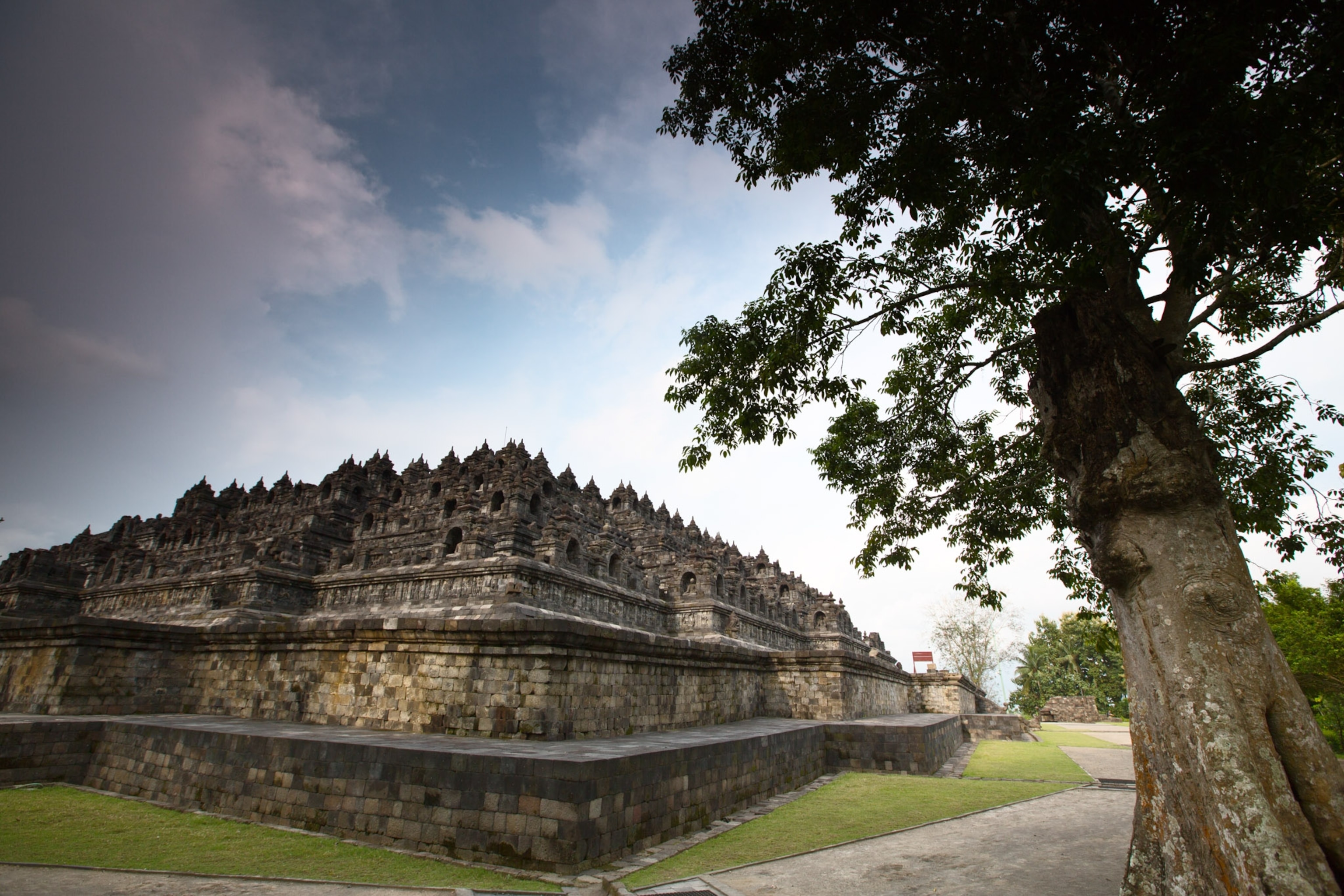
Dupe for Angkor Wat: Borobudur, Indonesia
Pre-COVID pandemic, the monumental ruins of Cambodia ’s 12th-century Angkor Wat temples received more than six million tourists a year. But you can visit the lesser known remains of another vanished civilization at Borobudur Temple , on Indonesia ’s island of Java. Built in the eighth century as a Buddhist sacred site, it consists of a great, three-tiered stupa (constructed with two million stones) surrounded by 72 smaller, bell-shaped shrines. The best time to visit? At sunrise or sunset, when the stones glow orange and pink against the surrounding mountains.

Dupe for Scandinavia: Tasmania
The northern lights of Scandinavian countries draw the crowds, but for a glimpse of the subtler southern lights (aurora australis), go to Tasmania, Australia ’s southernmost state. Come in the winter (June-August) for the best chance of spotting the luminous phenomenon amid the island’s diverse ecosystems, from temperate rainforests to snowy mountain ranges. Head to a national park like Cradle Mountain-Lake St. Clair or Tasman National Park , where dark skies promote aurora and star gazing.
( Why the northern lights are showing up in unexpected places .)
Dupe for the Grand Canyon: Letchworth State Park, New York
The forested shale and sandstone cliffs of western New York’ s Letchworth State Park tower as high as 600 feet above the banks of the Genesee River, giving the area the nickname “Grand Canyon of the East.” The gorge draws about a million visitors a year to the narrow 14,350-acre park. (The Grand Canyon saw 4.5 million tourists in 2023.) Letchworth has 50 waterfalls and 66 miles of hiking paths, including the popular seven-mile Gorge Trail and a one-mile Autism Nature Trail , the first of its kind in the U.S. Overnight at the Glen Iris Inn , with guestrooms in a 19th-century mansion, or at one of the 81 campsites scattered around the park.
Dupe for Maine: Grand Manan Island, New Brunswick
Grand Manan is a New Brunswick island in the Bay of Fundy that boasts lighthouses, quaint towns, and lobster rolls—without neighboring Maine ’s summer crowds. Reachable by a 90-minute ferry ride from Blacks Harbor, Grand Manan has a cultural heritage that includes the Passamaquoddy people, 1800s French traders, and British loyalists fleeing the American Revolution. Today the serene island is popular for coastal hikes, kayaking, and spotting whales, dolphins, and 360 bird species, including puffins, loons, and warblers.
( See Canada’s top natural wonders, from icebergs to the world’s highest tides .)

Dupe for the Taj Mahal: Bibi Ka Maqbara, Aurangabad, India
In the Indian state of Agra, up to eight million people a year visit the Taj Mahal , the grand 1631 marble mausoleum Mughal emperor Shah Jahan commissioned for his beloved wife, who died young. About a six-hour drive south, the Bibi Ka Maqbara is another domed marble tomb, built three decades later by Jahan’s son, who was also widowed early. Nicknamed “the poor man’s Taj” due to its smaller size and humbler building materials (stone and plaster), the Bibi still impresses with its charbagh (Mughal garden representing paradise), reflective pools, and enclosed mosque.

Dupe for Croatia: Montenegro
Croatia ’s Dalmatian Coast is world famous for its pretty coastline and historic architecture. It’s also famous for summer hordes, which is why savvy Europeans end up in Montenegro next door. The small country’s Adriatic coastline is dotted with picturesque medieval towns and beach resorts. Particularly charming villages include Budva and Kotor, with their orange-tiled roofs, twisting streets, and ages-old churches.

Dupe for Lake Como: Lake Atitlán, Guatemala
Lacking Lake Como’s celebrity prices, but with a similarly memorable mountain-and-water setting, Guatemala ’s Lake Atitlán sits in an enormous volcanic caldera formed 84,000 years ago. It’s fringed by small Mayan-speaking towns and dominated by the escarpments of three volcanoes (one still active). Travelers climb trails to the volcanic peaks, kayak, or explore lakeside villages by water taxi. Top stops include hippie-cool San Marcos, for yoga studios and probiotic eateries, or Santa Catarina Palopó, for colorful murals based on the designs of traditional huipil blouses woven by local women.
Related Topics
- OVERTOURISM
- CULTURAL TOURISM
- HISTORIC SITES
- NATIONAL PARKS
- DARK-SKY PRESERVES
You May Also Like

25 essential drives for a U.S. road trip

25 breathtaking places and experiences for 2023
Free bonus issue.

What’s a ‘dark sky nation’ and why does New Zealand want to become one?

5 spectacular ways to see the northern lights in Canada

2024 will be huge for astrotourism—here’s how to plan your trip

What’s better than autumn at a historic inn? Here are 10 to visit.

The essential guide to visiting West Virginia
- History & Culture
- Photography
- Environment
- Paid Content
History & Culture
- History Magazine
- Mind, Body, Wonder
- Terms of Use
- Privacy Policy
- Your US State Privacy Rights
- Children's Online Privacy Policy
- Interest-Based Ads
- About Nielsen Measurement
- Do Not Sell or Share My Personal Information
- Nat Geo Home
- Attend a Live Event
- Book a Trip
- Inspire Your Kids
- Shop Nat Geo
- Visit the D.C. Museum
- Learn About Our Impact
- Support Our Mission
- Advertise With Us
- Customer Service
- Renew Subscription
- Manage Your Subscription
- Work at Nat Geo
- Sign Up for Our Newsletters
- Contribute to Protect the Planet
Copyright © 1996-2015 National Geographic Society Copyright © 2015-2024 National Geographic Partners, LLC. All rights reserved
Park of Culture and Leisure - All You Need to Know BEFORE You Go (2024) - Tripadvisor
- (0.92 km) Elektrostal Hotel
- (1.60 km) Yakor Hotel
- (2.10 km) Hotel Djaz
- (2.25 km) Mini Hotel Banifatsiy
- (2.32 km) MTM Hostel Elektrostal
- (0.11 km) Teremok
- (0.34 km) Coffee Shop Usy Teodora Glagoleva
- (0.40 km) Mazhor
- (0.48 km) Tashir Pizza
- (0.50 km) Ermitazh

- About Taj Mahal
A TIMELESS SAGA | Mughal Splendour
Who could ever think that an eternal love leading to the saga of infinite bondage can evolve out of a desert like land and would blossom to be the reason to gift our world a poem-in-marble, The Taj!
No image of The Taj, neither on canvass nor on celluloid, can adequately express its conceptual imaginary nor convey the legend, the poetry and the romance that shrouds what Rabindranath Tagore calls "a teardrop on the cheek of time".
The Taj Mahal, a spectacle in white marble, unparalleled in grandeur that depicts the sheer opulence of an era. The awesome structure, the monument of love that Mughal Emperor Shah Jahan gave to the world, stands as a testimony of his intense love for his wife Mumtaz Mahal.
It is a romance celebrated in marble and glorified with precious and semi-precious stones and that’s the way to appreciate it!
Uttar Pradesh, the Land of The Taj is rich in its cultural heritage and has always been a prominent arena of politics since the ancient times. Agra, the City of The Taj and once the capital of the Mughal Empire during the 16th through the early 18th centuries, enjoys a close proximity to the National Capital City of New Delhi.
Tourists from all over the world visit Agra to make a pilgrimage to Taj Mahal, India’s most famous architectural wonder, in a land where magnificent temples and edifices abound to remind visitors about the rich civilization of a country that is slowly but surely lifting itself into an industrialized society as well.
Taj Mahal means "Crown Palace" and is in fact the most well preserved and architecturally beautiful tomb in the world. The English poet, Sir Edwin Arnold has described The Taj as "Not a piece of architecture, as other buildings are, but the proud passions of an emperor’s love wrought in living stones."
It is a romance celebrated in marble and glorified with precious and semi-precious stones and that’s the way to appreciate it!.
Taj Mahal stands on the bank of River Yamuna, which otherwise serves as a wide most defending the Great Red Fort of Agra, the center of the Mughal emperors until they moved their capital to Delhi in 1637. It was built by the fifth Mughal emperor, Shah Jahan in 1631 in memory of his third but the most favourite wife, in fact a soul-mate Mumtaz Mahal, a Muslim Persian princess. She died while accompanying her husband in Burhanpur in a campaign to crush a rebellion after giving birth to their 13th child. The death so crushed the emperor that all his hair and beard were said to have grown snow white in a few months.
When Mumtaz Mahal was still alive, she extracted four promises from the emperor: first, that he build the Taj; second, that he should marry again; third, that he be kind to their children; and fourth, that he visit the tomb on her death anniversary. However, due to ill health and being under house arrest by his own son and successor to the throne, Aurangzeb, barred him from continue to keep the last promise.
The Taj rises on a high red sandstone base topped by a huge white marble terrace on which rests the famous dome flanked by four tapering minarets. Within the dome lies the jewel-inlaid cenotaph of the queen. So exquisite is the workmanship that the Taj has been described as "having been designed by giants and finished by jewellers". The only asymmetrical object in the Taj is the casket of the emperor which was built beside the queen’s as an afterthought.
Legend has it that during his eight years long ailment and imprisonment, Shah Jahan used to intensly view The Taj lying on the bed through a diamond fixed in the wall in front at a particular angle. WOW!!!
As a tribute to a woman of exotic beauty and as a monument of a love story, which is keeping us engrossed even when we are reading through these pages here, truely an ever-lasting romance of a love not ended as yet, the Taj reveals its subtleties to its beholder!
The rectangular base of Taj is in itself symbolic of the different sides from which to view a beautiful woman. The main gate is like a veil to a woman’s face which should be lifted delicately, gently and without haste on the wedding night. In Indian tradition the veil is lifted gently to reveal the beauty of the bride. As one stands inside the main gate of Taj, his eyes are directed to an arch which frames the Taj.
The dome is made of white marble, but the tomb is set against the plain across the river and it is this background that works its magic of colours that, through their reflection, change the view of the Taj. The colours change at different hours of the day and during different seasons.
The Taj sparkles like a jewel in moonlight when the semi-precious stones inlaid into the white marble on the main mausoleum catch and reflect back its glow with a better gleam. The Taj is pinkish in the morning, milky white in the evening and golden when the moon shines. These changes, they say, depict the different moods of a beauty of any kind.
Different people have different views of the Taj but it would be enough to say that the Taj has a life of its own that leaps out of marble. A masterpiece of the art and science of architecture, a representative of an era called The Mughal Period surpassing any authority to add or de-add anything in any sense in or out of the Taj!
The Taj Mahal stands tall with grace is not just a parable epitome of emotional & eternal love between a man and a woman but for other reasons too _
Emperor Shah Jahan, who commissioned the construction of ‘The Taj’, desired to create it also as a symbol of solemnity, harmony, purity and spirituality as well.
The Taj is not merely a monument of grace and dignity alone. It is, in fact, a message to all mankind that “Pure love is the soul of life”.
The Taj is a reminder for all mankind about the universally accepted but not so well practiced concept of ‘Love & Peace’, the essence of the paradise, free from conflicts of races and geographical boundaries is important to be observed solemnly.
The Taj is simply a majestic tribute to an exotic beauty!
The saga of The Taj would be half told if the myths related to it are not mentioned. Like many a great buildings the Taj Mahal has its myths and legends. It seems that there is more fiction on the Taj than serious scholarly research. Several of the stories belong solely to oral tradition and are told by the guides, some are so established that they form a popular history of the monument and have made their way into guidebooks, and some have been taken up by scholars, or even created by them, and thus become part of the scholarly debate.
To the last category belong the oldest tales of the Taj. Here the most widely known is the story of the second Taj, the 'Black Taj', which Shah Jahan intended to build in black marble opposite the present mausoleum, on the site of the Mahtab Bagh. It goes back to Jean-Baptiste Tavernier who, when at Agra in 1665 AD, reported that 'Shahjahan began to built his own tomb on the other side of the river, but the war with his sons interrupted his plan, and Aurangzeb, who reigns at present, is not disposed to complete it. Shah Jahan was put under house arrest by his own son and successor by force, Aurangzeb. The latter did not agree with his father on most issues and was particularly opposed to him building a black Taj as his own mausoleum.
Upon Shah Jahan's death, Aurangzeb made the body of the Emperor, who got the body of his beloved Mumtaz in a golden casket from Burhanpur to Agra, carried in a boat by only two men and buried him in the Taj, next to his wife in probably the simplest manner.
Shah Jahan, the Emperor, who fulfilled the wishes of his beloved, could not find fulfilment of his own wish to build a Black Taj to express his mourning for the beloved Queen Mumtaz Mahal even after his death. That was the serenity in the purity of love.
Legend has it that during his eight years long ailment and imprisonment, Shah Jahan used to intensly view The Taj lying on the bed through a diamond fixed in the wall in front at a particular angle, WOW!!!
As a tribute to a woman of exotic beauty and as a monument of a love story, which is keeping us engrossed even when we are reading through these pages here, truely an ever-lasting romance of a love not ended as yet, the Taj reveals its subtleties to its Beholder! Come!! Be Thy One!!!
Know the Agra
Discover taj, official contacts.
+91 0562 2226431 10:00 AM to 5:00PM
+91 562 2421204 06:30 AM to 09:30PM
UP Police Helpline
ELECTROSTAL HISTORY AND ART MUSEUM: All You Need to Know BEFORE You Go (with Photos)
- (0.19 mi) Elektrostal Hotel
- (1.21 mi) Yakor Hotel
- (1.27 mi) Mini Hotel Banifatsiy
- (1.18 mi) Elemash
- (1.36 mi) Hotel Djaz
- (0.07 mi) Prima Bolshogo
- (0.13 mi) Makecoffee
- (0.25 mi) Amsterdam Moments
- (0.25 mi) Pechka
- (0.26 mi) Mazhor

Moscow Metro Font

Moscow Metro is a multi-line display typeface inspired by the Moscow underground map. It comes in Regular and Color versions.
Moscow Metro is ideal for posters and headlines, neon signage and other artworks.
- Share by email
Designed by: Nadira Filatova Website
License: free for commercial use.


IMAGES
VIDEO
COMMENTS
Night viewing of Taj Mahal is available on five days in a month i.e. on full moon night and two nights before and two after the full moon. Timing: 20:00 hrs. to 23:59 hrs. in 8 batches of max. 50 people each. Time duration for each batch is half an hour (30 minutes). View details.
Taj Mahal. An immense mausoleum of white marble, built in Agra between 1631 and 1648 by order of the Mughal emperor Shah Jahan in memory of his favourite wife, the Taj Mahal is the jewel of Muslim art in India and one of the universally admired masterpieces of the world's heritage. Description is available under license CC-BY-SA IGO 3.0.
February 21, 2018. • 5 min read. The Taj Mahal is widely considered one of the most beautiful buildings ever created. The exquisite marble structure in Agra, India, is a mausoleum, an enduring ...
A UNESCO World Heritage Site, it is located on the bank of the Yamuna River and is counted among the most popular heritage monuments in India. Built between 1631 and 1648 AD, the Taj Mahal stands as the finest example of Indo-Islamic architecture, and is one of the seven wonders of the world. The timeless beauty of the Taj is a reflection of ...
Taj Mahal. Uttar Pradesh, Agra District N27 10 27.012 E78 2 31.992 Date of Inscription: 1983 Criteria: (i) Ref: 252 Brief Description An immense mausoleum of white marble, built in Agra between 1631 and 1648 by order of the Mughal emperor Shah Jahan in memory of his favourite wife, the Taj Mahal is the jewel of Muslim art in India and one of the universally admired masterpieces of the world's ...
The Taj Mahal (/ ˌ t ɑː dʒ m ə ˈ h ɑː l, ˌ t ɑː ʒ-/; lit. 'Crown of the Palace') is an ivory-white marble mausoleum on the right bank of the river Yamuna in Agra, Uttar Pradesh, India.It was commissioned in 1631 by the fifth Mughal emperor, Shah Jahan (r. 1628-1658) to house the tomb of his beloved wife, Mumtaz Mahal; it also houses the tomb of Shah Jahan himself.
The Taj Mahal is considered the finest example of Mughal architecture, a style that combines elements from Persian, Indian, and Islamic architectural styles. In 1983, the Taj Mahal became a UNESCO World Heritage Site and was cited as "the jewel of Muslim art in India and one of the universally admired masterpieces of the world's heritage." The Taj!
The Taj Mahal is one of the Seven Wonders of the World and on the top of everyone's list when visiting India. This incredible white marble structure is not only beautiful but is also a testament to the love that Mughal emperor Shah Jahan had for his wife Mumtaz Mahal. Built in the mid-1600s over a period of 22 years using 20,000 workers, the ...
Taj Mahal, Agra, India, designated a World Heritage site in 1983. Taj Mahal, mausoleum complex in Agra, western Uttar Pradesh state, northern India. The Taj Mahal was built by the Mughal emperor Shah Jahān (reigned 1628-58) to immortalize his wife Mumtaz Mahal ("Chosen One of the Palace"), who died in childbirth in 1631, having been the ...
The Taj Mahal is one of the great artistic treasures of the world, an instantly-recognisable emblem of India itself. It's a mausoleum, or tomb, commissioned in 1632 by Emperor Shah Jahan, one of the greatest Mugal Emperors, to house the body of his wife Mumtaz Mahal. Here, you can take in the famous architecture and surroundings in Street View.
A UNESCO World Heritage site and one of the new seven wonders of the world, ... "One of the most magical aspects of the Taj Mahal, and one few visitors take advantage of, is the view of it from ...
Recognized as a UNESCO World Heritage site, the Taj Mahal stands as an enduring symbol of love, devotion, and architectural brilliance. It continues to captivate millions of visitors from around the globe who come to witness its magnificence and pay homage to its historical significance. ... Taj Mahal's Impact on Tourism. The Taj Mahal is a ...
The Taj not only incorporates and expands on design traditions of Persian and earlier Mughal architecture, but it has also created a whole new dimension for architectural vision. Located on the bank of the Yamuna river in Agra, Taj Mahal is the epitome of architectural splendour which is known to the world over as 'teardrop on the cheek of ...
Taj Mahal Taj Mahal is famous for Own beauty and one of the wonders of the world. Home; Visiting Hours & Ticketing; Nearby AttractionsAgra Beyond Taj; ... Taj Heritage: Fatehabad Road , Agra: 4008013 -14: 22: 600&1500: 49: ... This is the official Website of Taj Mahal - Department of Tourism, Government of Uttar Pradesh, India.
The Taj Mahal is an iconic structure and a UNESCO World Heritage site in the city of Agra in India. History of the Taj Mahal. Built between 1631 and 1654, the construction of the Taj Mahal was ordered by the ruling emperor Shah Jahan as a mausoleum for his favourite wife, Empress Mumtaz Mahal.
Salman Rushdie on the enduring beauty of the Taj Mahal. India; Writing; Tourism; UNESCO World Heritage Sites; Overtourism; More. History. A husband's love built the Taj Mahal—but cost him an empire. India; Architecture; Memorials; Tombs; More. Photo Gallery. Travel and Adventure. Top 10: Iconic Places to Photograph.
W hen it comes to truly great monuments, it doesn't get much more iconic than the ivory-white marble, and satisfying symmetry, of the Taj Mahal. Perched on the banks of the river Yamuna in Agra ...
World Heritage partnerships for conservation. Ensuring that World Heritage sites sustain their outstanding universal value is an increasingly challenging mission in today's complex world, where sites are vulnerable to the effects of uncontrolled urban development, unsustainable tourism practices, neglect, natural calamities, pollution, political instability, and conflict.
Whether another Taj Mahal or a stand-in for the Grand Canyon, these lesser known sites rival bucket-list attractions. With its domed structures and lush gardens, Bibi Ka Maqbara was built 300 ...
Taj Mahal Timing Entry Ticket Fee Entry To Taj Mahal Travel Guide Do's & Don'ts Feedback Genaral FAQ's Disclaimer Official Contacts +91 0562 2226431 10:00 AM to 5:00PM
Park of Culture and Leisure, Elektrostal: See 16 reviews, articles, and 17 photos of Park of Culture and Leisure, ranked No.7 on Tripadvisor among 11 attractions in Elektrostal.
In 1954, Elemash began to produce fuel assemblies, including for the first nuclear power plant in the world, located in Obninsk. In 1959, the facility produced the fuel for the Soviet Union's first icebreaker. Its fuel assembly production became serial in 1965 and automated in 1982. 1. Today, Elemash is one of the largest TVEL nuclear fuel ...
The Taj Mahal, a spectacle in white marble, unparalleled in grandeur that depicts the sheer opulence of an era. The awesome structure, the monument of love that Mughal Emperor Shah Jahan gave to the world, stands as a testimony of his intense love for his wife Mumtaz Mahal. It is a romance celebrated in marble and glorified with precious and ...
Art MuseumsHistory Museums. Write a review. All photos (22) Suggest edits to improve what we show. Improve this listing. Revenue impacts the experiences featured on this page, learn more. The area. Nikolaeva ul., d. 30A, Elektrostal 144003 Russia. Reach out directly.
License: Free for commercial use. July 14, 2020 featured in Display. Download Moscow Metro font, a multi-line display typeface in two styles, inspired by the Moscow underground map. Moscow Metro is ideal for posters and headlines, neon signage and other artworks.